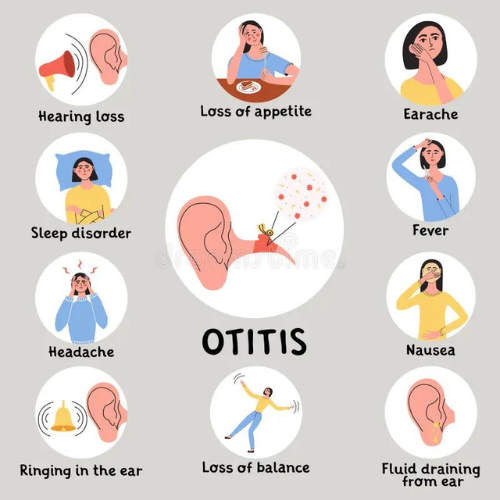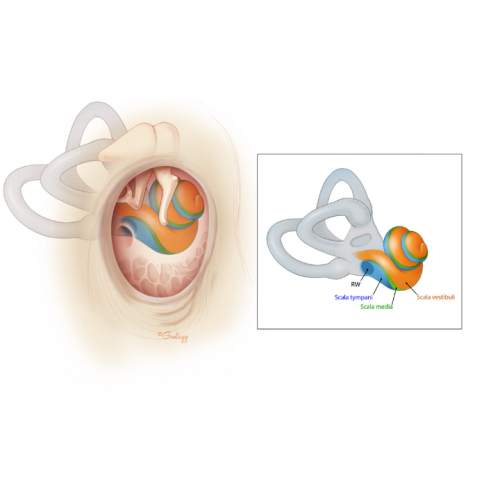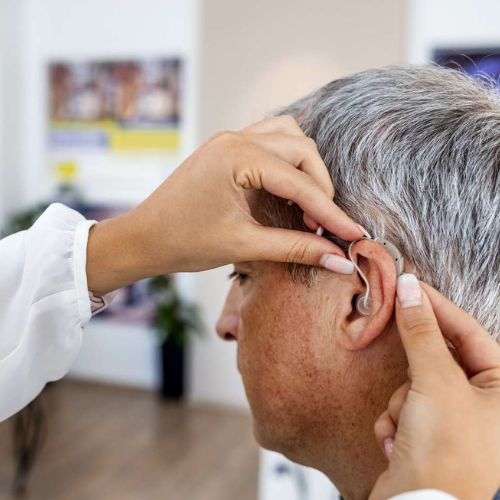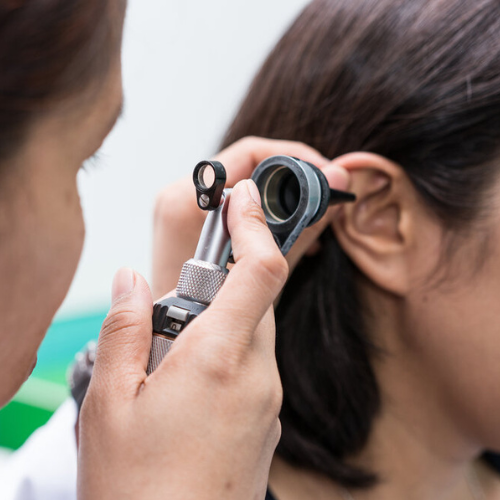A Comprehensive Guide to Prevalent Ear Infections & Diseases
As we age, our body begins to experience a lot of changes. One of these changes has the potential to affect how our ears function. Sometimes, we can acquire diseases associated with the ear, which are an enormous source of discomfort and might even lead to hearing loss. Comprehending numerous kinds of ear infections and diseases might assist you in learning about the indicators of hearing loss & acquire correct medical attention. In this article, we’ll be discussing a few prevalent ear diseases that can impact someone’s life in a big way, as well as their symptoms and treatment choices.
Common Ear Diseases
There are numerous ear diseases present out there. Still, there are a few prevalent ear issues in individuals who might have hearing loss later on if these issues aren’t taken care of, specifically among two children. These infections can be classified into two primary kinds:
Otitis Externa (Swimmer’s Ear)
This kind of ear disease influences the outer ear canal and often occurs due to bacteria and moisture within the ear. Early signs and indications of this kind of ear disease include itching, ear pain, discharge, and swelling a few times.


Otitis Media (Mid-Ear Disease)
This ear disease will affect the middle ear, which will become full of liquids and inflamed. Indicators of this infection include difficulty hearing, ear pain, fever, and even a loss of balance.
Treatment
Ear diseases are often treated with typical pain relievers found at pharmacy stores or with antibiotics. There are a few cases in which ear drops are utilized to assist patients in alleviating their symptoms.
The Types of Hearing Loss
Hearing loss is a disease that only worsens with age, and the chances of getting it get higher. This kind of disease is a prevalent condition in older individuals. There are two primary kinds of hearing loss that are witnessed in patients.
Sensorineural Hearing Loss (SHL)
Sensorineural hearing loss (SNL) is a kind of ear disease that occurs when trauma occurs to the auditory nerve or inner ear. This often happens due to noise exposure, ageing or specific medical conditions.
Conductive Hearing Loss
This kind of ear disease happens when sound waves cannot be transmitted to the inner ear due to complications within the middle or outer ear. Prevalent reasons involve earwax blockages, abnormalities within the ear bones and infections.


Treatment
The best way to cure hearing loss is by acquiring hearing aids, cochlear implants or mediations in a few cases.
Tinnitus
Tinnitus refers to the ringing or buzzing sensation sound within someone’s ears, even when no external sound can be heard. This type of hearing disease can be complicated and influence someone’s day-to-day life.
Why it occurs?
Tinnitus occurs for numerous reasons, and it depends on multiple factors involving age-associated hearing loss, ear disease, exposure to loud sounds and certain medications.
Treatment
While there is no present cure at the time of writing this blog post, there are numerous treatments that patients could utilize to lessen the burden they have acquired. These might involve sound therapy, hearing aids, counselling or medication.
Vertigo
This type of ear disease is called the sensation of spinning or dizziness. This can be one of the most irritating diseases as it interferes with daily activities.
Causes of Vertigo
Usually, treating vertigo varies depending on the underlying reason for it happening. This may include medications, physical therapy or surgery in a few situations.
Other Kinds of Ear Infection
Other kinds of ear diseases could lead to hearing loss, such as:
Acoustic Neuroma
This disease is a benign tumour that begins to grow gradually on the auditory nerve. This tumour can end up causing someone to have hearing loss, Tinnitus and facial numbness.
Perforated Eardrum
A whole present within the eardrum where there shouldn’t be one is referred to as a perforated eardrum. This type of disease appears in individuals due to injuries, infections or sudden pressure changes.
Earwax buildup
If there is an excess amount of earwax present within the ear, it could block the ear canal, which could lead to hearing loss. A healthcare professional can quickly get rid of This type of infection.
Infections Present within the Ear
Antibiotics aren’t typically given to patients due to infections present within the ear disappearing on their own, and antibiotics don’t make that much of a difference in the end anyway to symptoms, which include pain. However, there are a few situations in which antibiotics are prescribed to patients, which include:
- An ear infection hasn’t gotten better after three days have passed
- Your child or you have fluids coming out of the ear
- Other aspects which boost your chances of your child or you experiencing complications within the ear such as having a weakened immune system.
Additionally, antibiotics might be given to patients if they’re under two years old and have acquired an infection in both ears. Ear drops are provided to patients as painkillers instead of antibiotics.
Ensuring Ear Infections don’t occur
There is no way of being safe from ear diseases, but you could be safer and have a lower chance of acquiring infections. Inner ear infections are tough to avoid since colds and flu typically cause them. To assist your child in ensuring that they don’t get ear infections, you should ensure that your child stays away from smoky environments. To assist in keeping outer ear infections away, you shouldn’t stick fingers or cotton wool buds within their ears. Refrain from using earplugs or swimming hats over your ears when swimming.
